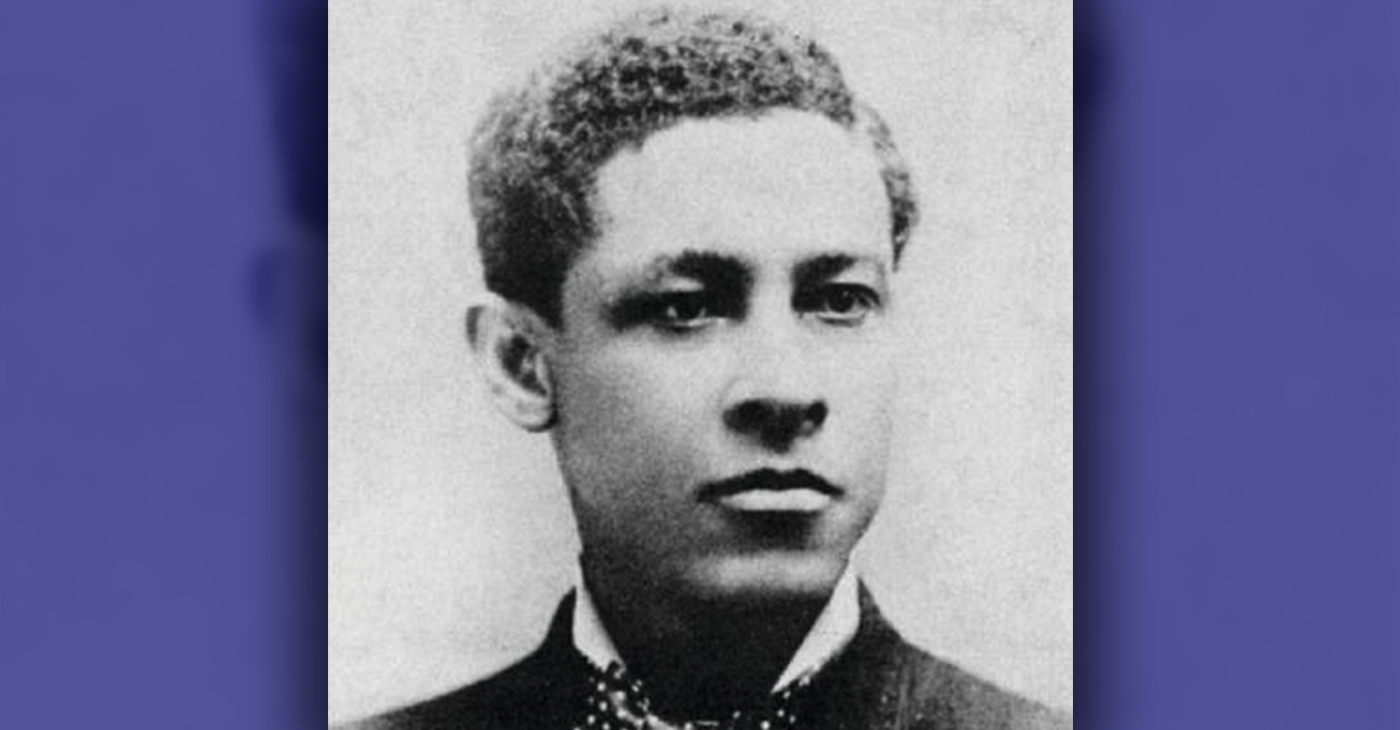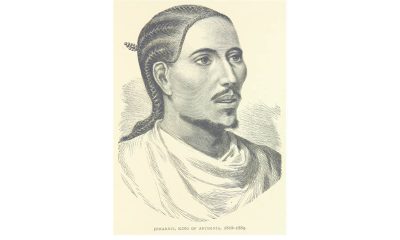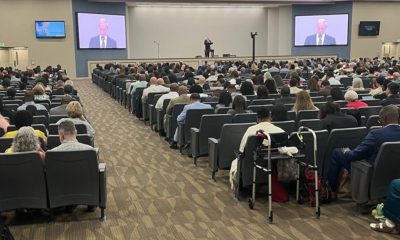Black History
Jan Ernst Matzeliger’s Invention Revolutionized Shoe Manufacturing
A cordwainer is a shoemaker who makes new shoes from new leather. Lasting is the part of the process that sets the final shape of a shoe and holds it in place so the outsole can be permanently attached. Designing a machine to perform the lasting was thought to have been impossible. But Jan Ernst Matzeliger (1852–1889), was determined to automate this task. And with persistence, he was successful. He revolutionized the industry of shoemaking with his lasting machine. It cut the cost of manufacturing shoes in half, thereby making shoes more affordable.

By Tamara Shiloh
The craft of shoemaking was at one time difficult and manual work. But with the advent of the Industrial Revolution, cobblers and cordwainers cut, sewed, and tacked shoes with machines.
The inner and outer soles were attached with machines and other devices were used to sew uppers to lowers. The final part of the process though, remained manual: the lasting.
A cordwainer is a shoemaker who makes new shoes from new leather. Lasting is the part of the process that sets the final shape of a shoe and holds it in place so the outsole can be permanently attached.
Designing a machine to perform the lasting was thought to have been impossible. But Jan Ernst Matzeliger (1852–1889), was determined to automate this task. And with persistence, he was successful. He revolutionized the industry of shoemaking with his lasting machine. It cut the cost of manufacturing shoes in half, thereby making shoes more affordable.
Little is known about Matzeliger’s early life. He was born on the northern coast of South America in Paramaribo, Dutch Guiana (now the Republic of Suriname). By age 10, he was apprenticed in the machine shops. He had an interest in machinery and mechanics, and at the same time, desired to see the world.
At 19, Matzeliger went to sea on an East Indian merchant ship. When reaching America, he decided to stay in Philadelphia. There he worked odd jobs, one being a shoemaker’s apprentice.
Being a Black man limited his professional options; he struggled to make a decent living. By 1876, he would relocate to Boston. After a brief stay, he settled in Lynn, Mass., where shoemaking was an established industry.
Matzeliger was soon hired at Harney Brothers’ shoe factory, where he operated a McKay sole-sewing machine and ran a heel-burnisher and a buttonhole machine. He wanted to learn more about the craft, so he studied the hand lasters as they worked.
A hand laster pulls and secures lining uppers over lasts (a mechanical form shaped like a human foot) to form leather shoes of designated size, then trims away the excess material with a knife.
At night, Matzeliger began to duplicate the movements of the lasters. He secretly made drawings as he experimented with various materials. Six months later, his employer offered $50 for the unfinished machine. Matzeliger rejected it.
Four years later, after reconstructing the machine using iron, Matzeliger was offered $1,500. Again, he rejected it and continued to improve his machine. After 10 years, people began to laugh at Matzeliger and his efforts, but he refused to be discouraged. Eventually, when the time became right, he sought investors and was able to finance a patent.
In 1883, Matzeliger received a patent for his lasting machine. The first public operation of the machine took place in 1885, when the machine broke a record by lasting 75 pairs of shoes. He later received several other patents for shoe-manufacturing machinery.
Unfortunately, in pursuing his work, Matzeliger sacrificed his health working long hours and not eating for long periods of time. He died of tuberculosis three weeks before his 37th birthday, never reaping the profit of his invention.
Encourage your tweens to read more in Barbara Mitchell’s “Shoes for Everyone: A Story about Jan Matzeliger.”
Activism
Oakland Post: Week of July 24 – 30, 2024
The printed Weekly Edition of the Oakland Post: Week of July 24 – 30, 2024

To enlarge your view of this issue, use the slider, magnifying glass icon or full page icon in the lower right corner of the browser window. ![]()
Activism
Oakland Post: Week of July 17 -23, 2024
The printed Weekly Edition of the Oakland Post: Week of July 17 -23, 2024

To enlarge your view of this issue, use the slider, magnifying glass icon or full page icon in the lower right corner of the browser window. ![]()
Black History
Betty Harris: Inventor of Spot Test That Revolutionized Chemical Detection
Our accomplishments never cease to amaze me. Imagine being a scientist who can detect hidden chemicals with just a simple test. Here’s another hidden gem. Dr. Betty Harris is a brilliant scientist and inventor known for her work in chemistry. She was born on July 29, 1940, in Louisiana. From a young age, Betty was fascinated by science. She loved to learn how things worked and always asked lots of questions. Her passion for science led her to become a chemist.

By Tamara Shiloh
Our accomplishments never cease to amaze me. Imagine being a scientist who can detect hidden chemicals with just a simple test. Here’s another hidden gem.
Dr. Betty Harris is a brilliant scientist and inventor known for her work in chemistry. She was born on July 29, 1940, in Louisiana. From a young age, Betty was fascinated by science. She loved to learn how things worked and always asked lots of questions. Her passion for science led her to become a chemist.
By 1961, aged just 19, she had graduated from Southern University in Baton Rouge with a chemistry degree.
She did her research at Los Alamos National Laboratory, New Mexico, where she worked in the areas of hazardous waste treatment and environmental remediation as well as explosives chemistry. Areas of focus included explosives detection, synthesis and characterization of insensitive high explosives and sensitivity of weathered high explosives.
Her invention, a spot test for TATB, represents a significant advancement in the detection of this crucial but stable explosive compound.
TATB stands for 1,3,5-triamino-2,4,6-trinitrobenzene. It’s a type of explosive that is very stable and safe to handle, making it important for various safety applications. TATB is used in explosives because it doesn’t explode easily under heat or shock, which means it’s safer to store and use.
Harris invented a special test called a “spot test” to detect TATB. Before her invention, finding TATB in materials was difficult and time-consuming. Her spot test made it quick and easy to detect this important chemical.
The spot test developed by Harris is a simple yet powerful method that involves a few straightforward steps. A small sample of the material in question is obtained. The sample is treated with a special chemical solution formulated by Harris. If TATB is present in the sample, the solution undergoes a color change, providing a clear and immediate indication of its presence.
Harris’s spot test is important for several reasons. The test helps ensure that explosives are safe to handle and store. By detecting TATB quickly, accidents can be prevented. It is easy to use and provides fast results, saving time and resources.
Inventions like Harris’s help science to progress by making it easier to work with important chemicals.
Her contributions extend beyond her scientific achievements. She is a passionate advocate for education and has been a mentor to countless young scientists, particularly encouraging girls and African American students to pursue careers in Science, Technology, Engineering and Math (STEM) fields.
Her dedication to fostering the next generation of scientists has earned her numerous accolades and respect in the academic community.
Harris still lives in New Mexico.
-

 Arts and Culture3 weeks ago
Arts and Culture3 weeks agoRooted in Tradition: The Intricate History of Black Hair Braiding
-

 Bay Area4 weeks ago
Bay Area4 weeks ago“I Will Not Be Bullied,” Says Oakland Mayor Sheng Thao
-

 Bay Area2 weeks ago
Bay Area2 weeks agoPG&E Increases Rates While Bay Area Households Are Struggling to Stay Afloat
-

 Business3 weeks ago
Business3 weeks agoGov Newsom: Raising Fast Food Minimum Wage to $20 Pays Off as Jobs Multiply in Industry
-

 Activism4 weeks ago
Activism4 weeks agoOpponents of Mayor Sheng Thao Are Calling on Her to Resign Following FBI Raid
-

 Bay Area2 weeks ago
Bay Area2 weeks agoJuneteenth Mass Shooting Suspect Charge with Multiple Counts of Felony Assault by Alameda County DA Pamela Price
-

 Community1 week ago
Community1 week agoHundreds Come to Jehovah’s Witnesses’ Assembly Hall for Three-Day Program of ‘Good News’ in Fremont
-

 Activism4 weeks ago
Activism4 weeks agoOakland Coliseum Sale to AASEG: A Model for Community Development and Inclusion























































